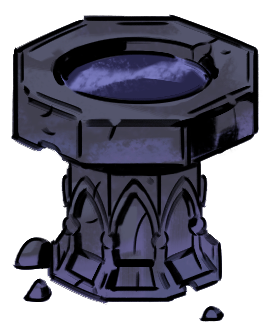Art Direction on Reignbreaker
It was a huge honour to art direct Reignbreaker throughout pre-production for my truly amazing team at Studio Fizbin.
Trailer & Screenshots
Please select 4K quality. Caution loud volume! ⚠️
Reignbreaker is a high-octane action roguelike set in a dystopian medievalpunk world. Step into the boots of Clef, a fearless rebel ready to rid the world of the Kingdom’s oppression, take down the Elite and lay siege to the Queen’s grand Bastion.
Art Direction
My work areas included:
- Supporting and managing the art department throughout pre-production
- Creation of concept art, mock-ups, art guides, overpaints, various assets and an overall visual style
- Hiring, interviews, art tests, freelance briefs
- Production support, creation of roadmaps, establishing processes and structural conventions, strategy and planning
- Creative direction support, game feel and world building work
I was hired into Studio Fizbin’s pre-existing art team and tasked to give my art style to the IP. To do this, I provided concepts, guides and paintovers to best convey my artistic decisions in line with the general game vision. The team had never taken on a game of this genre and proportion, so there was a lot of ground to cover.
A big part of Reignbreaker’s developers were hired throughout the mid to late stages of pre-production. After my handover at the end of pre-production, the fully staffed art team had the chance to further refine the game’s style throughout production.
To give our artists all necessary context around asset production, I worked closely with the creative director and the design department to create game loop rundowns, apply playtime estimates to different game areas, and extrapolate asset scopes from it. I went on to create roadmaps with staggered feature production phases and asset lists. To keep bottlenecks at a minimum, I established workflow guides & pipelines in and around the art department. I set up iterative concepting processes, studio-wide file handling and documentation structures, as well as accessible documentation crucial for the development of game features.
As a directing developer I optimised our processes around meetings, task estimations, efficient communication and interdepartmental transparency. I introduced the team to serving leadership methods such as proactive, ongoing vision alignment in harmony with trust and creative autonomy. I established higher level onboarding and studio processes, as well as a studio-wide job title and responsibility matrix. With necessary task delegation I established lead developer positions across departments, and appointed my lead artist Frauke Furch as department-first.
The works below are a small part of a much greater team effort, which included a myriad of department-wide concepts, previsualisations, tests and assets not included on this page.
I would like to note that I was hired to art direct for Reignbreaker due to similarities between my personal art style and that of HADES by Supergiant Games. I did not actively pursue this direction, and instead executed on the basis of my abilities and knowledge at the time.
Clef — Protagonist Character Design
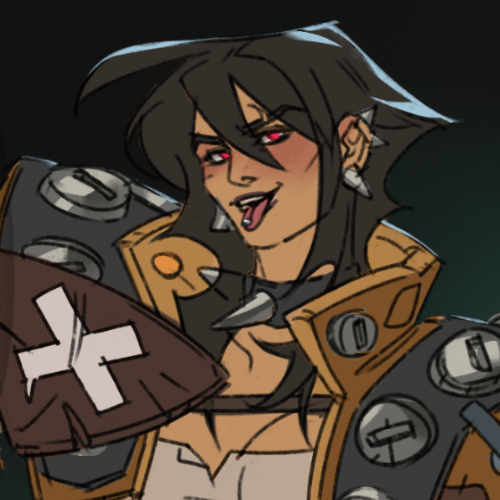
As a punk combat machinist in a tech-mediaeval world, Clef is equipped with a motorised javelin she wields to fight against Queen Fera Fera’s oppression and clan-led warfare. The player character ventures into the Queen’s dangerous bastion to vandalise security systems, rob and sabotage rich oppressors and bring about a revolution to free the people.
Clef is a rare battlefield machinist. She is able to customise her javelin to sabotage tech and traps around her, as well as break apart any war machines trying to stop her.
Getting to know Clef — her story, agency and abilities — was a gradual process throughout several concepting phases and conductive to the overall tone and aesthetic of the game.
Environment & Previsualisation: Techno-Mediaeval
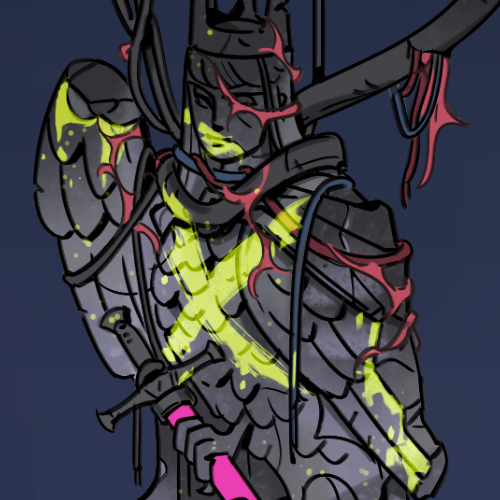
Reignbreaker takes place in a mediaeval kingdom, which experienced a technological revolution not too long ago. With the power of sentient Willstone crystals, humans were able to construct automaton machines and consequently commit horrible war crimes, leading to factions at war, oppression and total surveillance.
One faction constructed an Escher-like bastion out of repurposed mediaeval buildings, and reinforced it with dangerous tech to keep commoners out. Clef invades these spaces and acts as a political disruptor — breaking animos, reclaiming valuables and compromising hostile technology.
The team was tasked to build these spaces in the context of roguelike gameplay — focusing on smart asset reuse and level modularity. With a game loop and crucial game design elements in place, we were able to determine our asset scope and specifics around the modular environment blocks per scene.
While characters and certain props are 3D modelled, most of the environment assets are 2D textures projected onto 3D meshes (2.5D), paired with engine lighting and shaders. In order to ‘dress’ our game design greyboxes as fast as possible, we established a basic asset kit with tileable walls and tintable floor tiles, then we added a decorative asset pass after. Our understanding of game flow, ideal setup of assets, lighting and areas of interest was crucial to the art department, and executed with steady game design input.
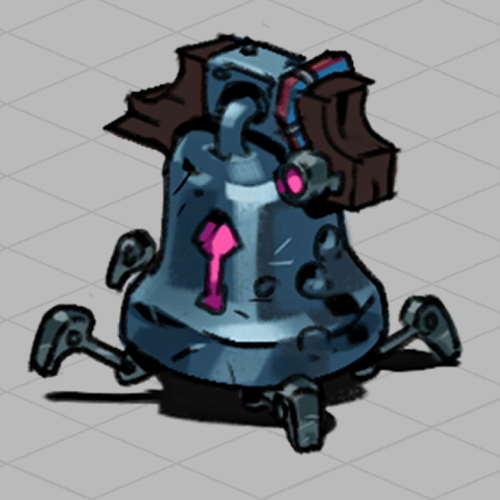
Oppressing forces make use of war machines, so-called animos. These somewhat sentient creations are tasked to keep the bastion safe from intruders such as Clef. In addition to that, traps, barriers and other security systems make for difficult terrain.
Luckily Clef is a pro and knows how to bust them apart.
Working out how to clash our mediaeval setting with ominous technological advancements in a consistent way required a thorough understanding of our game world. Initially, pushing through visual development with limited concept, narrative and design resources turned out to be a huge challenge. With more hires joining the studio later on however, the team arrived at a cohesive vision at the start of production.
Guides
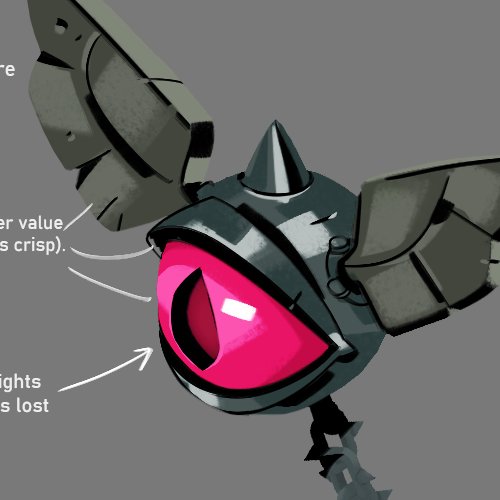
Reignbreaker’s aesthetic clashes crumbling, mediaeval ruins with modern tech born out of oppression: wear, neglect, hostility and traces of resistence give the game a grunge energy that works to deliver a raging, political punk player experience.
While the narrative themes of the game carry a lot of darkness, the visuals are meant to bring about a more light-hearted, defiant attitude.
We worked to evoke the rawness and immediacy of traditional media reminiscent of punk fliers and vandalism. Colours are punchy and vibrant, the shape language is illustrative-stylised, and the UI carries a strong underground graffiti/Spiderpunk identity.
To further the understanding around punk media (how does spray paint behave, what does paper bleed, ripping, gluing and doodling with huge pens look and feel like), I proposed an in-person graffiti spraying and crafting event, which the team fortunately got to do later on.
Links
